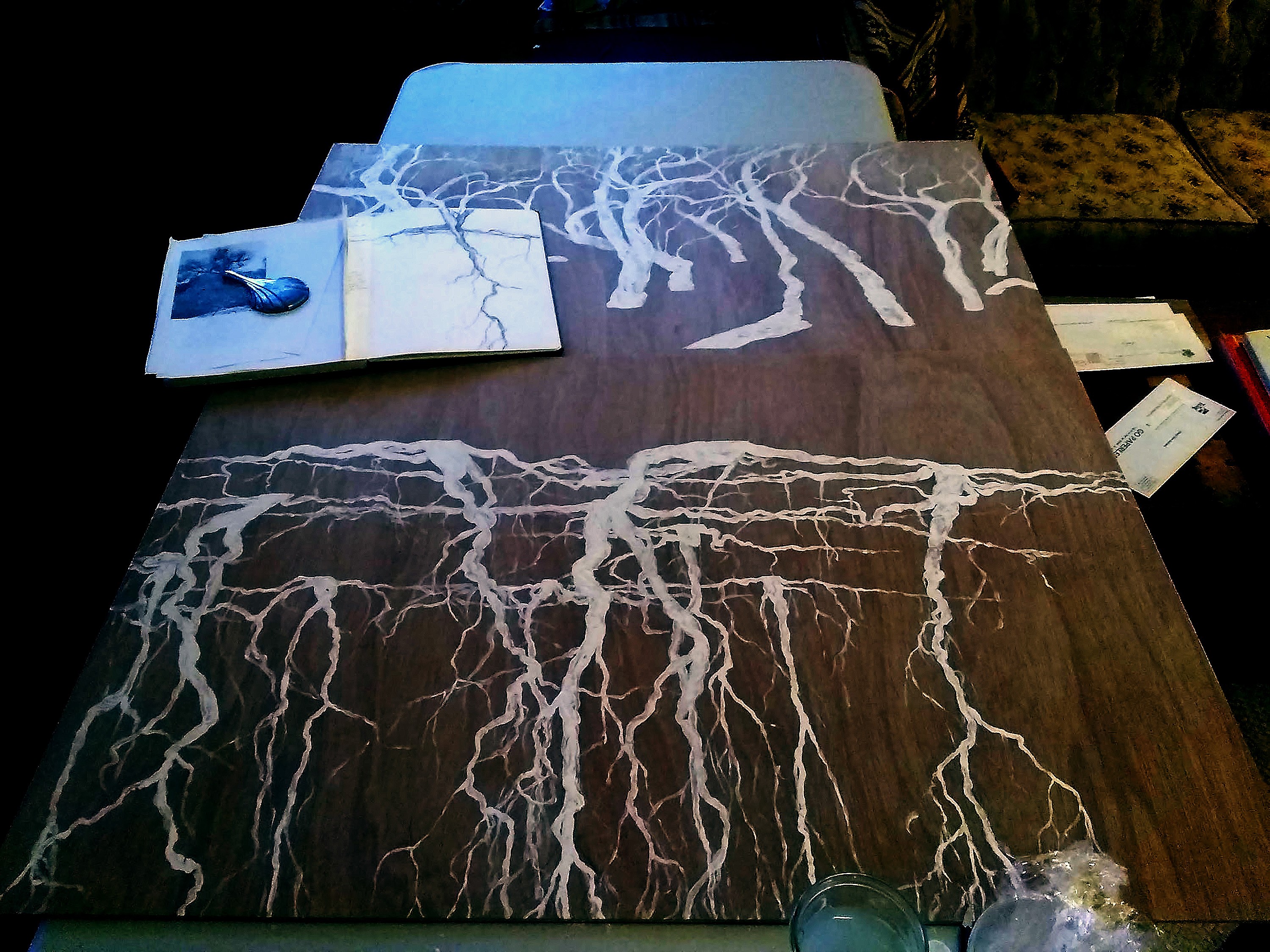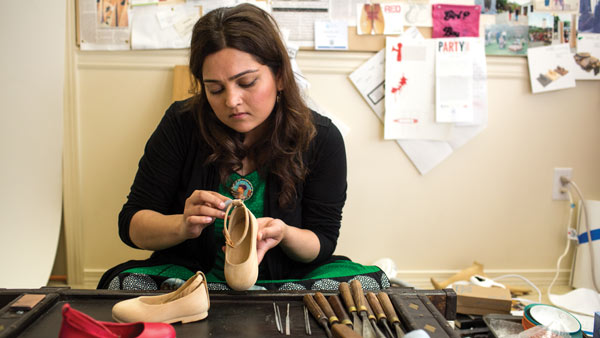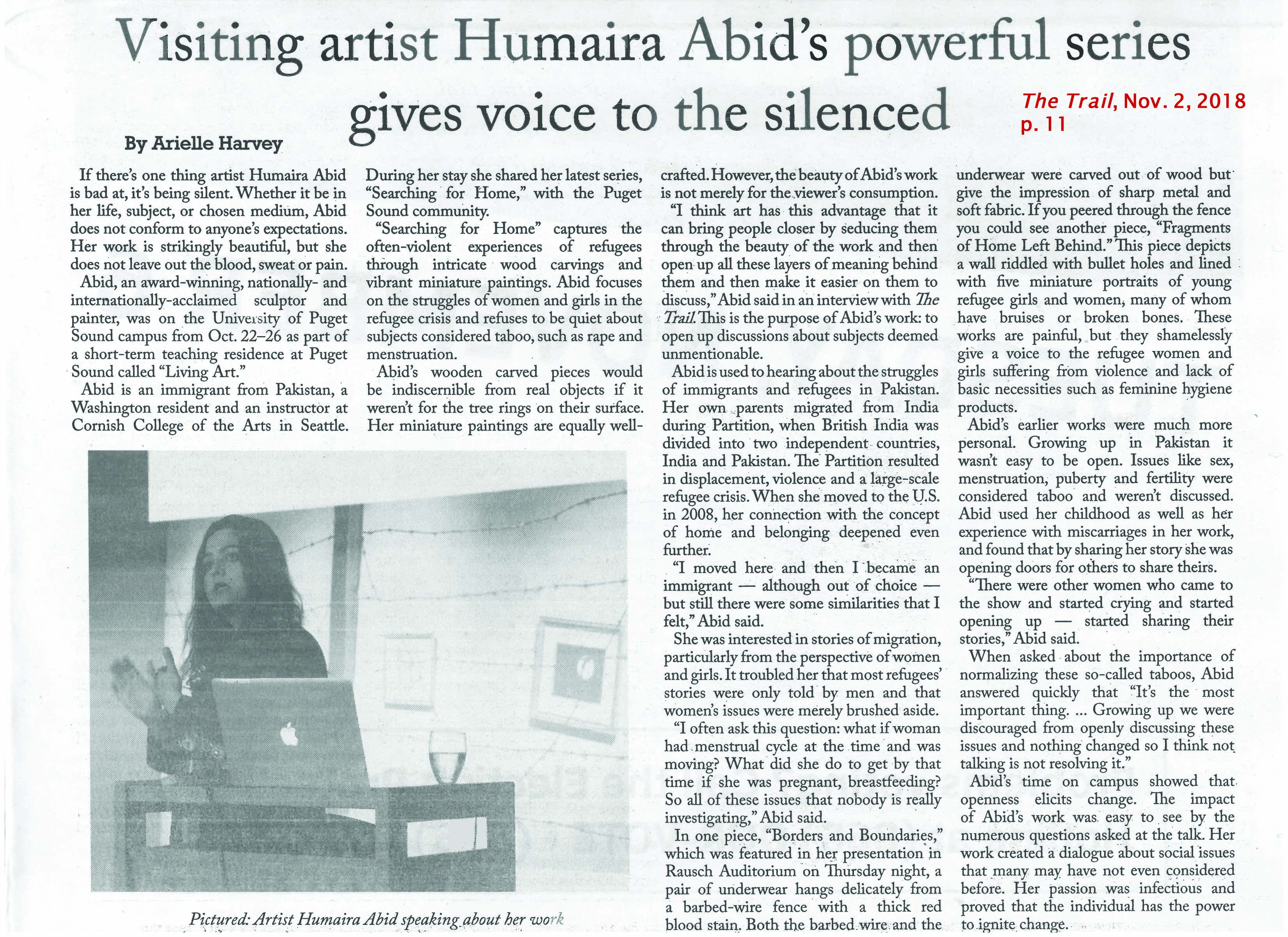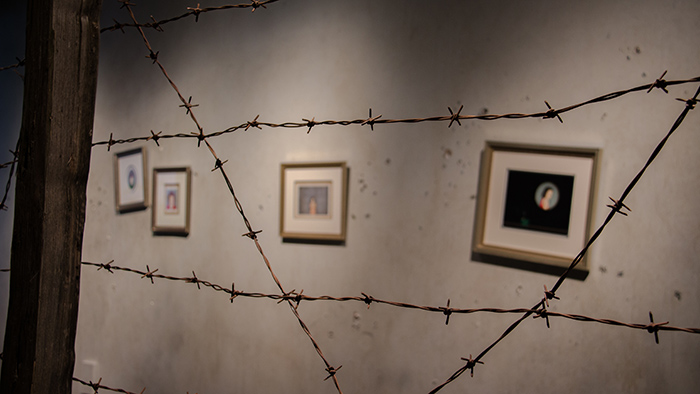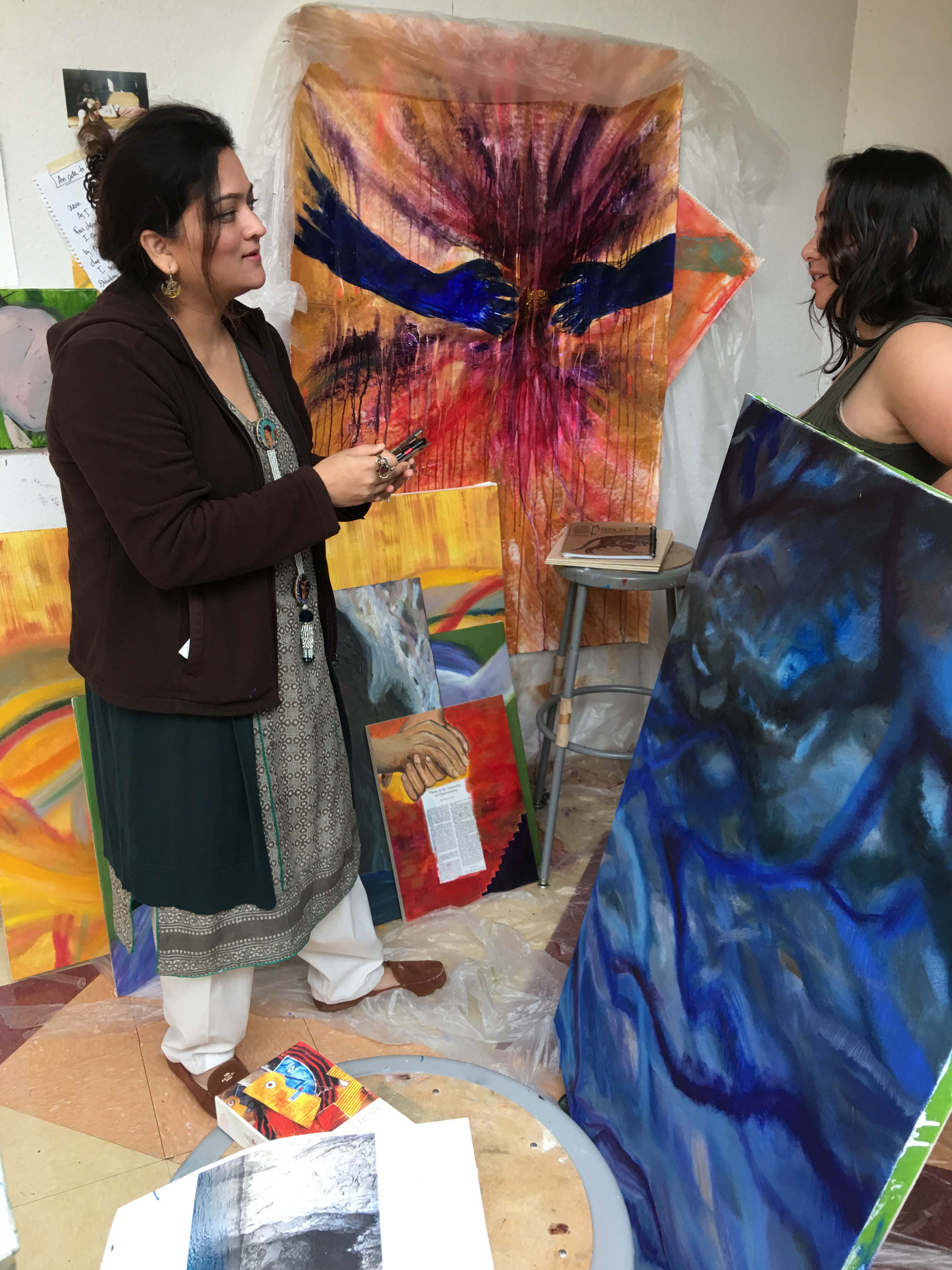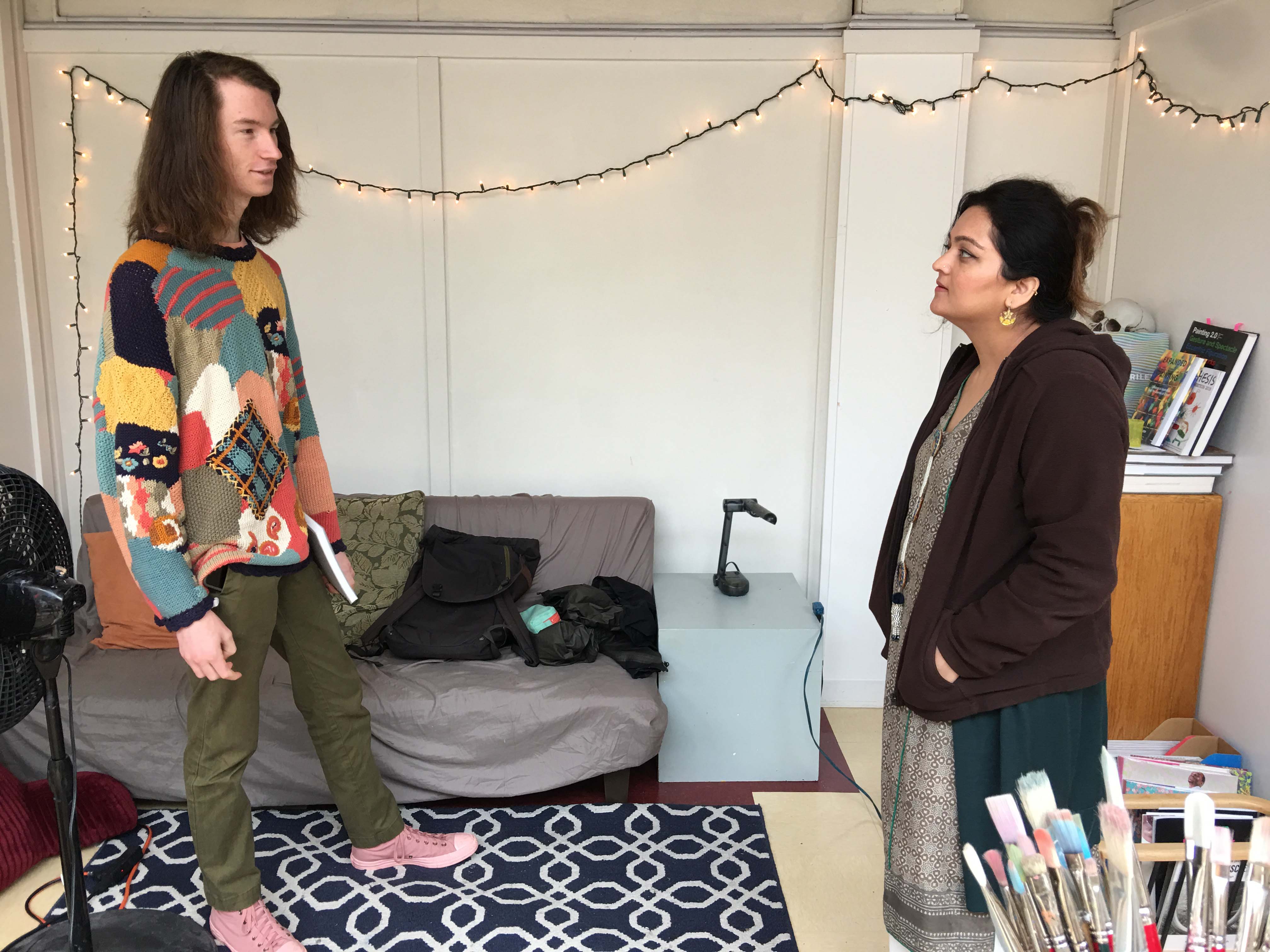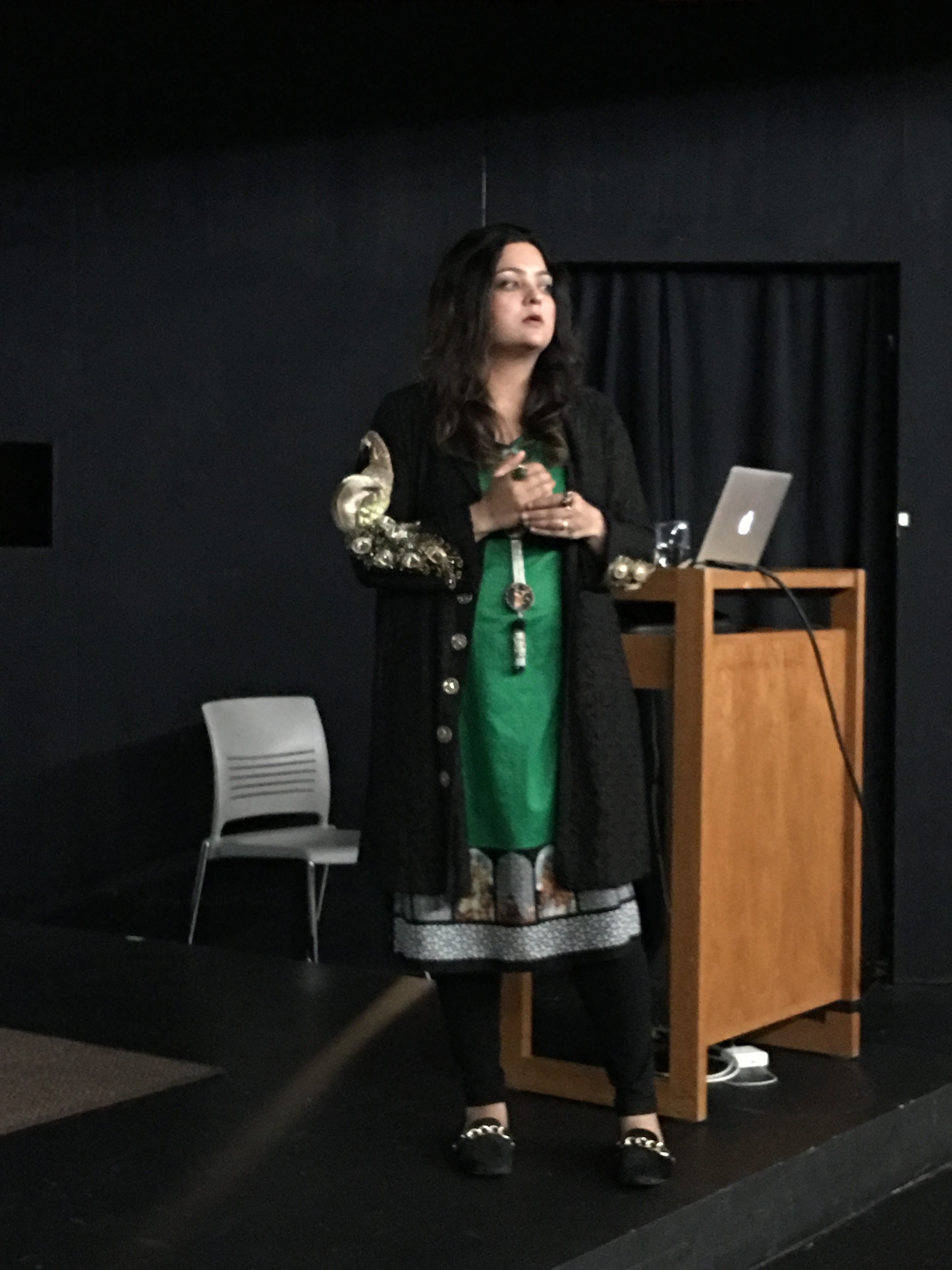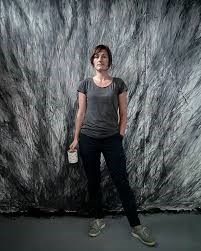
Making the most of a one-year Masters in Canterbury
This past year I began and completed a Masters of Fine Art Program at University for the Creative Arts in Canterbury, Kent. I had been working as a Montessori Teacher in Northern California when I was hit by a car while on my bike, and suffered from head injuries affecting my “working memory” – particularly words and names. Rediscovering my somewhat dormant “artist self” became the most vital means for me to swim through this exhausting mental fog into a new clarity, to exist again in realities beyond words – paint, texture, form, color, and feeling – things I had largely put aside to focus on a career working with children.
Canterbury — just an hour’s train from all London has to offer – seemed to be the perfect fresh start to my artistic rediscovery.
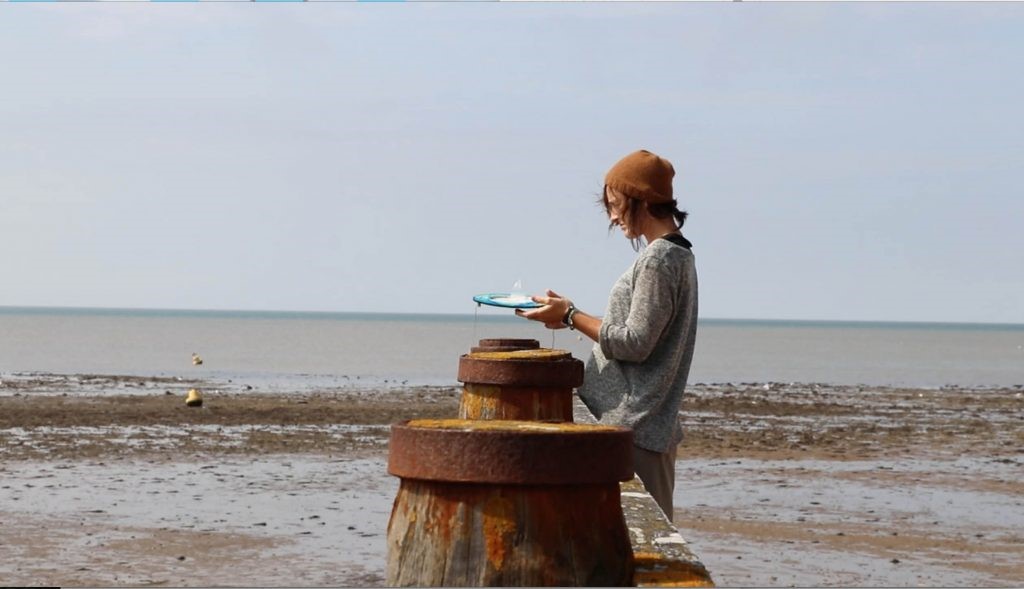
Though my art was initially unresolved, I did know two things: 1. My work would explore the dynamic between humans and nature and 2. I wanted to expand into the wider community beyond the university. I began to explore the woodlands and natural places in the Canterbury radius and put together a few applications to various community-based art opportunities…
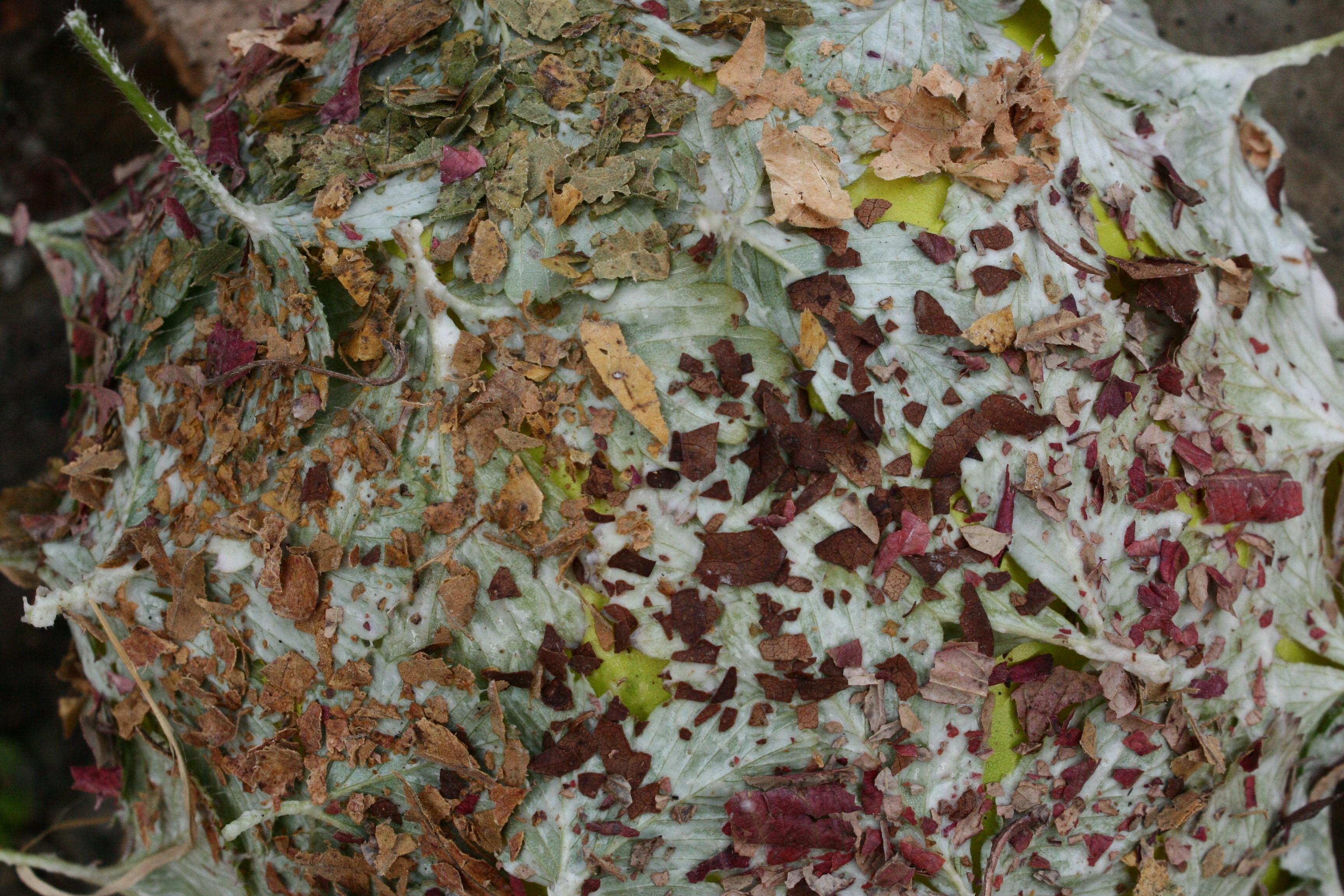
Fall Experiments, Leaves
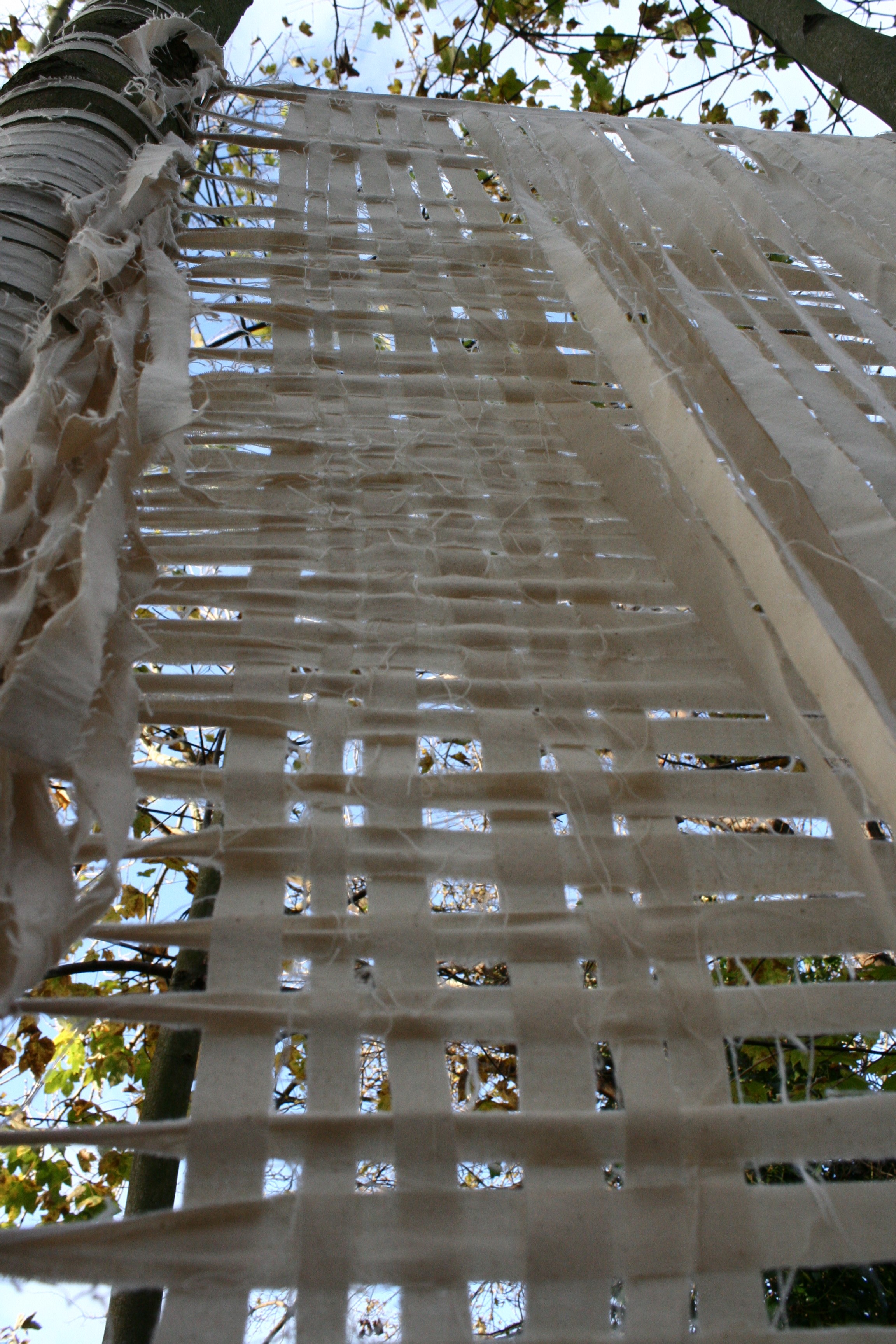
Fall Experiments, Tree Weave
October – December
Internship at the Lilford Gallery
I convinced the owner of a Lilford Gallery, a commercial gallery showing the likes of Banksy and Thrsty Bstrd, to give me an internship.
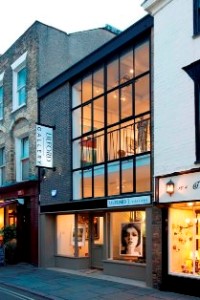
Image credit: Lilford gallery webpage
February
Cheriton Light Festival interactive light sculpture commission
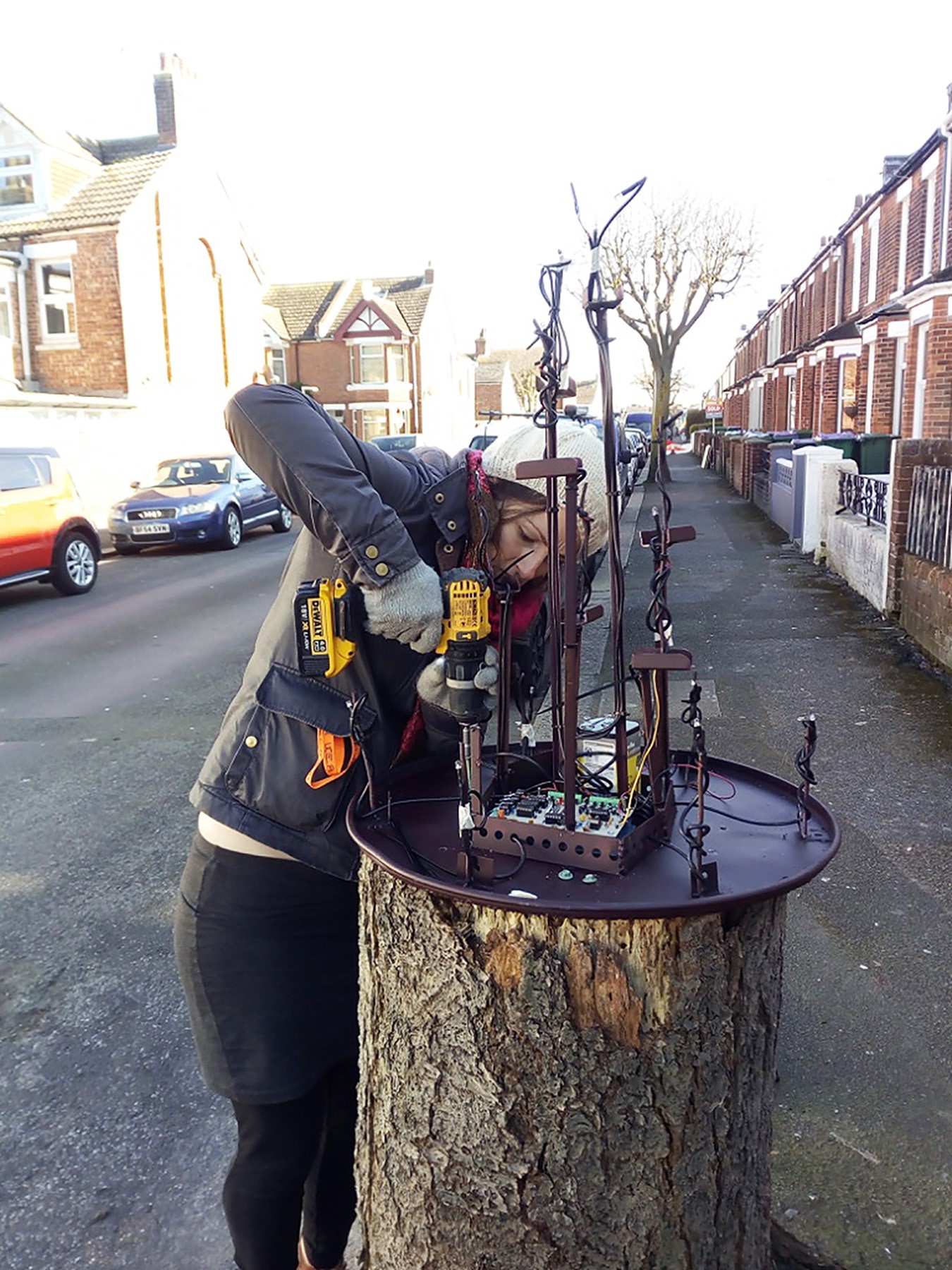
Installing the balloon shaped forms
The first commission I completed was for a light festival in Cheriton – a low-key working-class community along the Channel, whose claim to fame is their biannual light festival which draws artists and visitors from all over England. I collaborated remotely with my dad, an engineer, to design the wiring for a light sculpture that would undulate at random two lights at a time at 12 different points. In addition, they would all light up brightly together when someone clapped their hands.
I visited the 5th-year class a few blocks from where it would be installed and asked children there to answer questions about their present loves and future dreams. The answers were worked into translucent balloon-shaped forms attached to a welded steel base, which in turn was attached to the top of a large tree stump. The festival landed on the coldest, windiest weekend of the year, but in spite of that, thousands of people came to enjoy the artwork, many clapping their hands to illuminate the aspirational words of children. A bit of hope in a less than hopeful time.
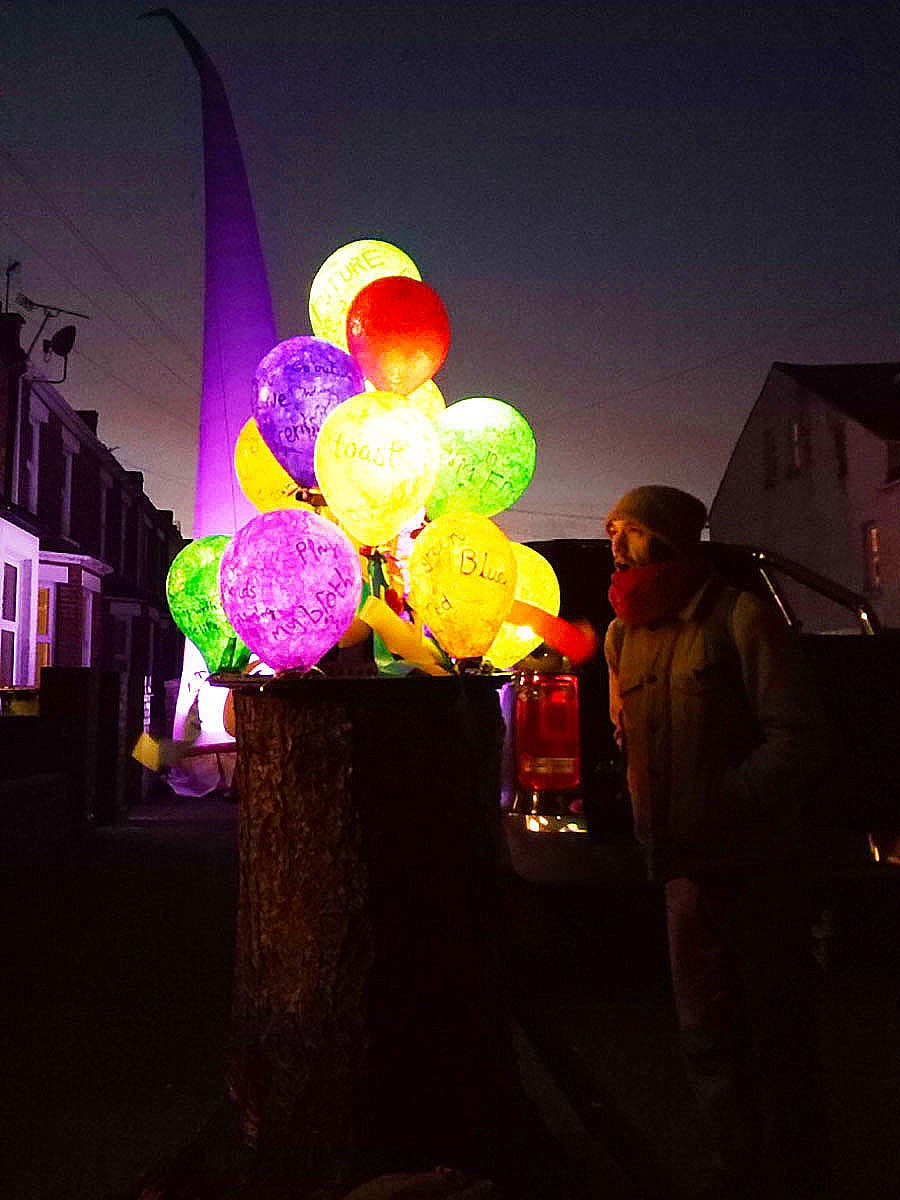
Installation during the festival
March
MA Interim Show: Mixed-media Installation
My fellow masters candidates and I created work scattered around the port town of Folkestone. I made an installation in the remnants of the historic Custom’s House, based on an on-going obsession with the coppiced trees in the Blean Woods — a managed woodland near my house in Canterbury. Coppicing is a centuries-old timber harvesting practice in the UK and other European countries that preserves the root-base, cutting stems every decade, to create a permanently-altered shrub-like stance to the trees.
My concept for this show was an imagining of the original tree energy, depicted like glossy, umbilical-chord-like sap veins extending upwards to the rafters of the building. A black and white video of the bottom half of a coppiced chestnut tree played in a loop, matched up with the bottom half of the sculpture.
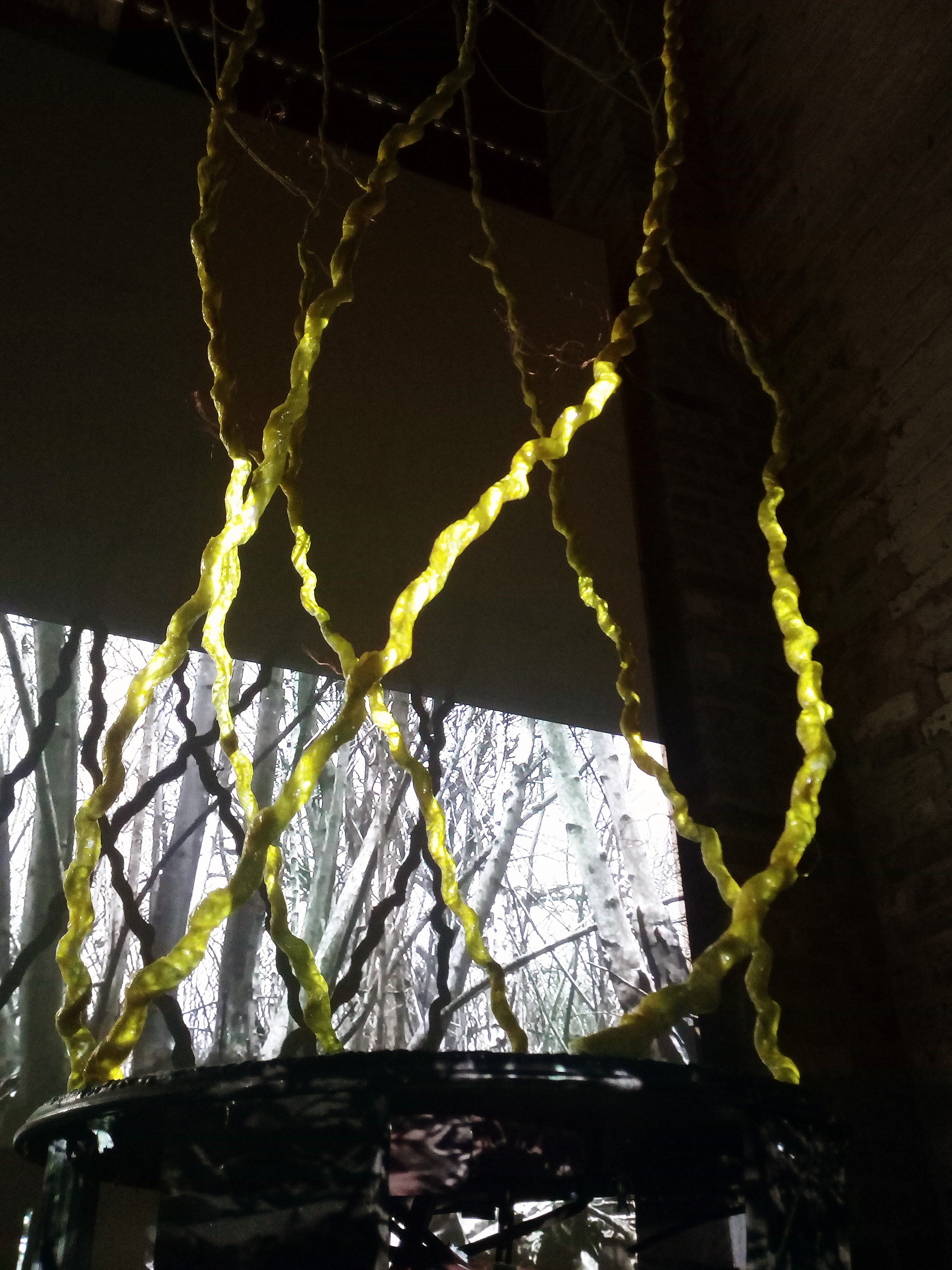
December – May
Traveller’s Joy! Mural on Canterbury East Rail Footbridge.
In November 2017, I submitted a proposal for an open call by the City Council to design and implement a mural. The mural would enhance the four walls abutting an historic, but rather dismal, graffiti-covered footbridge leading to the East Rail Station.
My proposal centered on the Kent native flower clematis vitalbi, also known as Travellers Joy, which grows prolifically in flowering tangles along pathways and railways. Each of the four walls depicted this plant in each of the four seasons. To add an imaginative element, I sprinkled silhouettes of tiny children in various playful interactions with the plant and included four hidden Canterbury literary references: Rupert Bear, David Copperfield, The Canterbury Pilgrims, and Sherlock Holmes with Doctor Watson (hiding at the rail station from Professor Moriarty).
I was there every day, 10-14 hours each day, 2.5 weeks. Over that time, I had arranged for a total of 9 volunteers to assist with various tasks and paint filling.
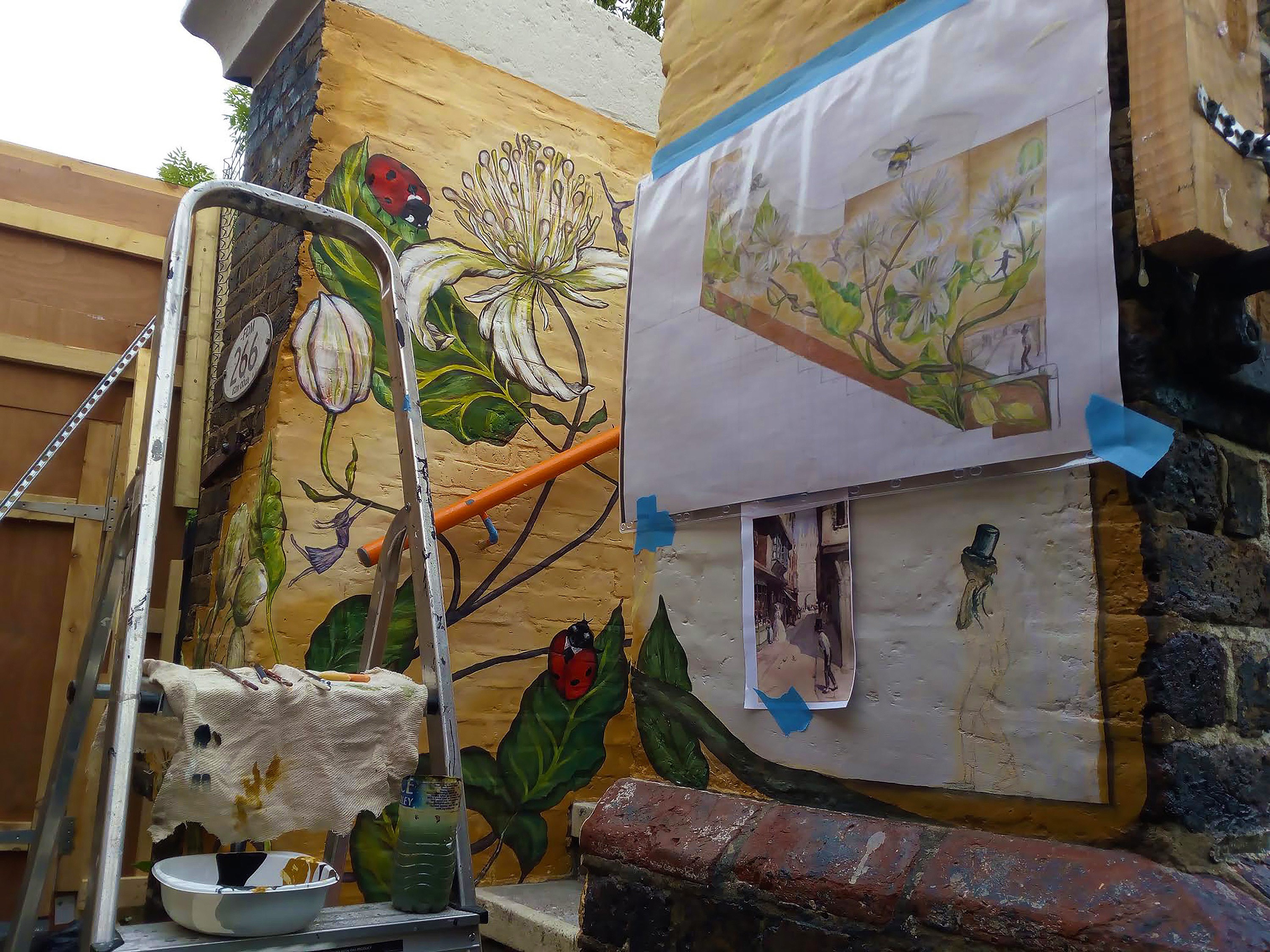
In the midst of the project, just days before our deadline, the elderly woman living right by the bridge, who was our constant support and inspiration, passed away in her sleep. She loved animals and had earlier asked if I would paint a robin, so in her memory, I put a robin on the winter wall – just the spot on the wall she would have been able to see from her living room window. Those last few days were very bittersweet, as she refused to see the mural progress until it was all finished, so after living for 30 years by a graffitied bridge, she never saw the joyful transformation.
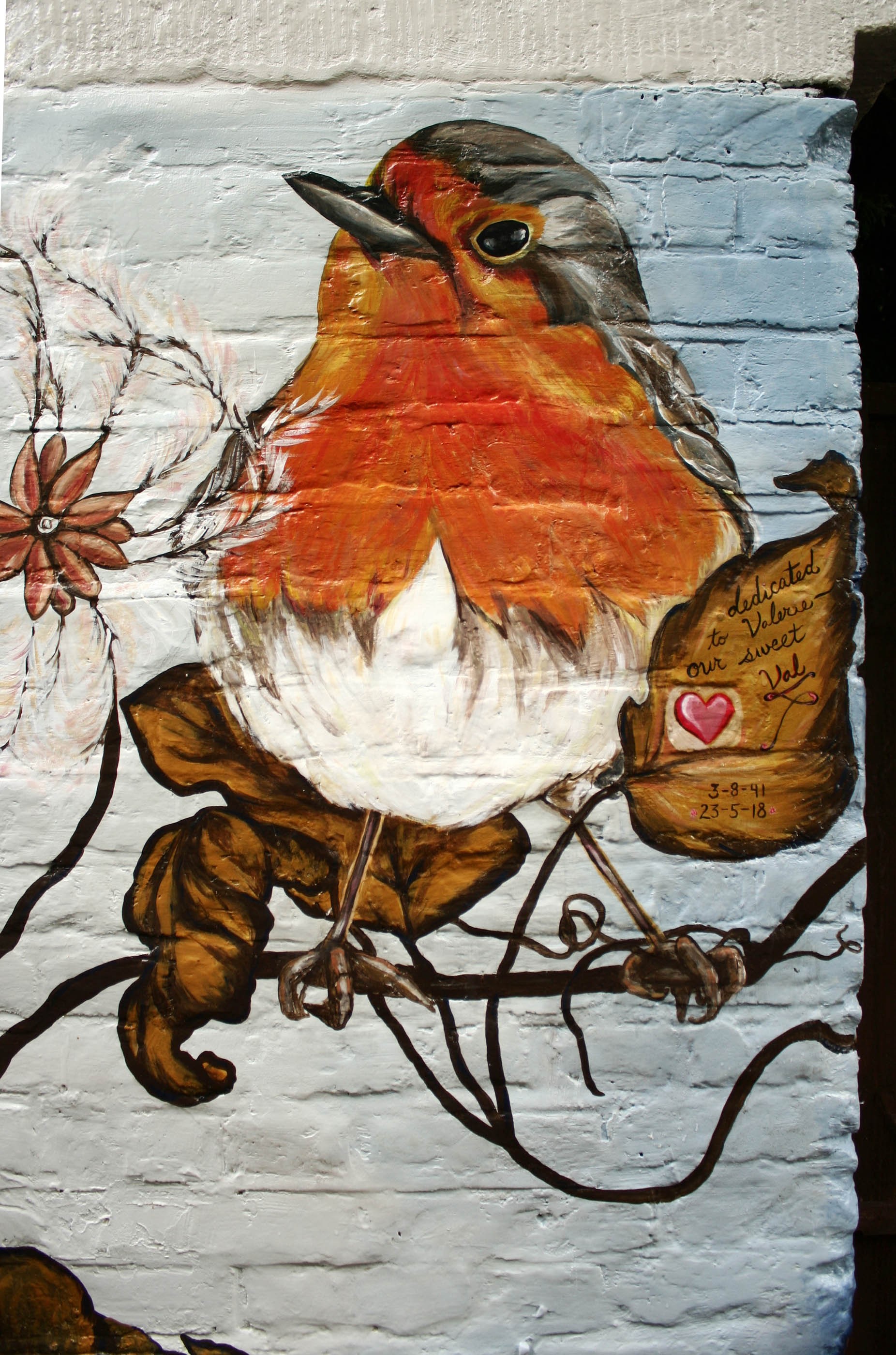
The Mayor of Canterbury, my volunteers, members of the community, and a few reporters attended the unveiling. Also, that day, families were invited to paint flowers on the wall leading to the bridge, and a number of the children in my neighborhood came and were very happy to have added something permanent to a historic place in their city. Everyone in the neighborhood who had anything to say about it (which I feel was everybody), insisted it would get graffitied over within a week. I held up faith in the morality of ‘street artists,’ and as of August, before I left England, only one silver spray-paint scribble nestled in the silvery-blue colors of the winter wall. I take that as approval from the tagging community!
June
Whitstable Biennale: Outdoor Installation of 8 haikus about water
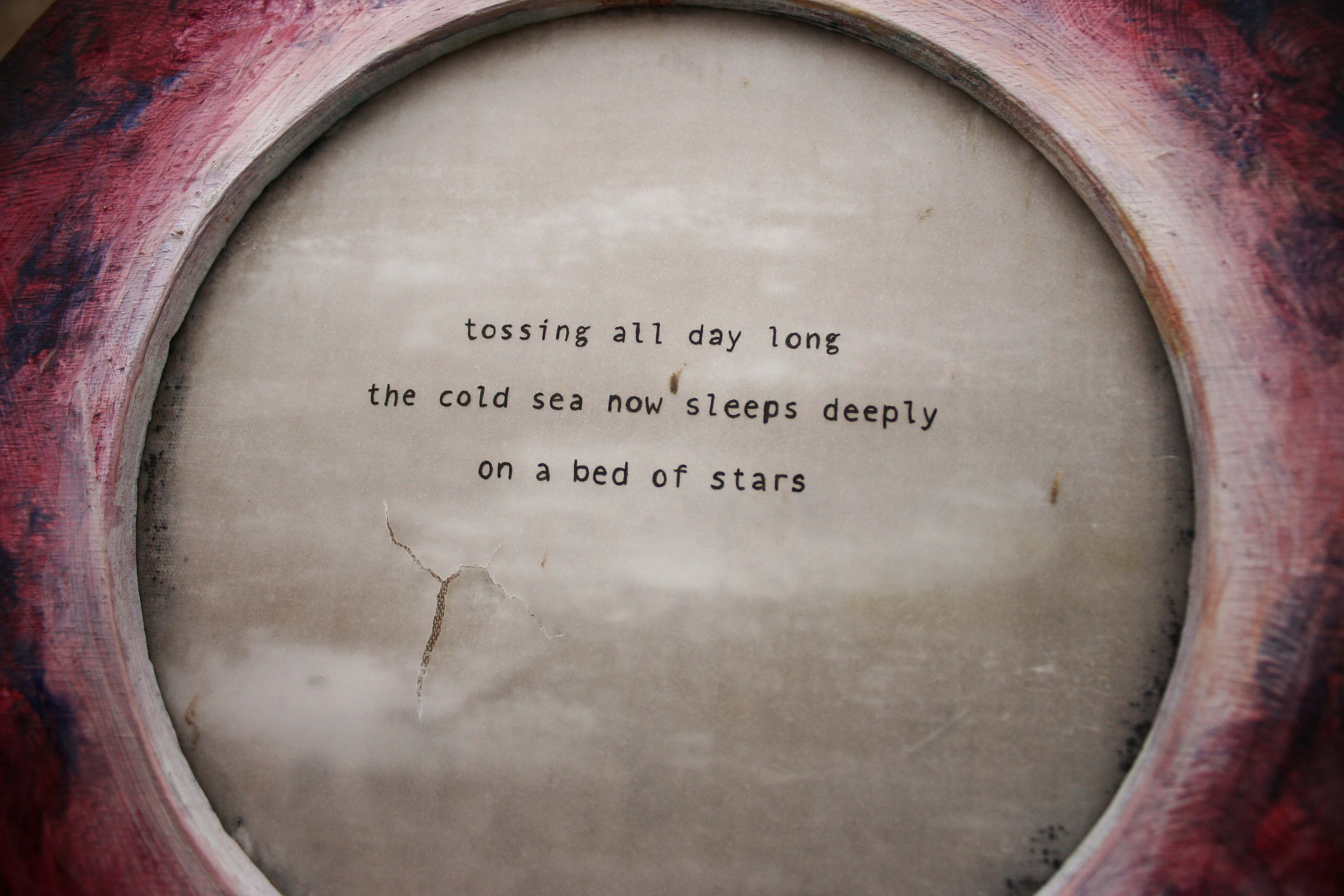
For the Whitstable Biennale, I proposed to use haiku’s in a contemplative, and at times amusing, work of discovery along the seafront, used primarily for oyster fishing. The process of quietly busing to the town on a foggy morning, fixing the disks to the posts with wire, and documenting the way they wiggled and waved in the wind, was a calming, therapeutic process I enjoyed very much. Even better was documenting the damage and wear they had after two weeks outside. One only had the tiniest of bird droppings while another was completely torn from its wires and dashed into several shredded pieces down along the rocks. I LOVE that! Luckily, one of the poems with little damage was written by a punk musician from King Blues, Jonny “Itch” Fox, and I was able to gift it to him in person at one of the London metro stations.
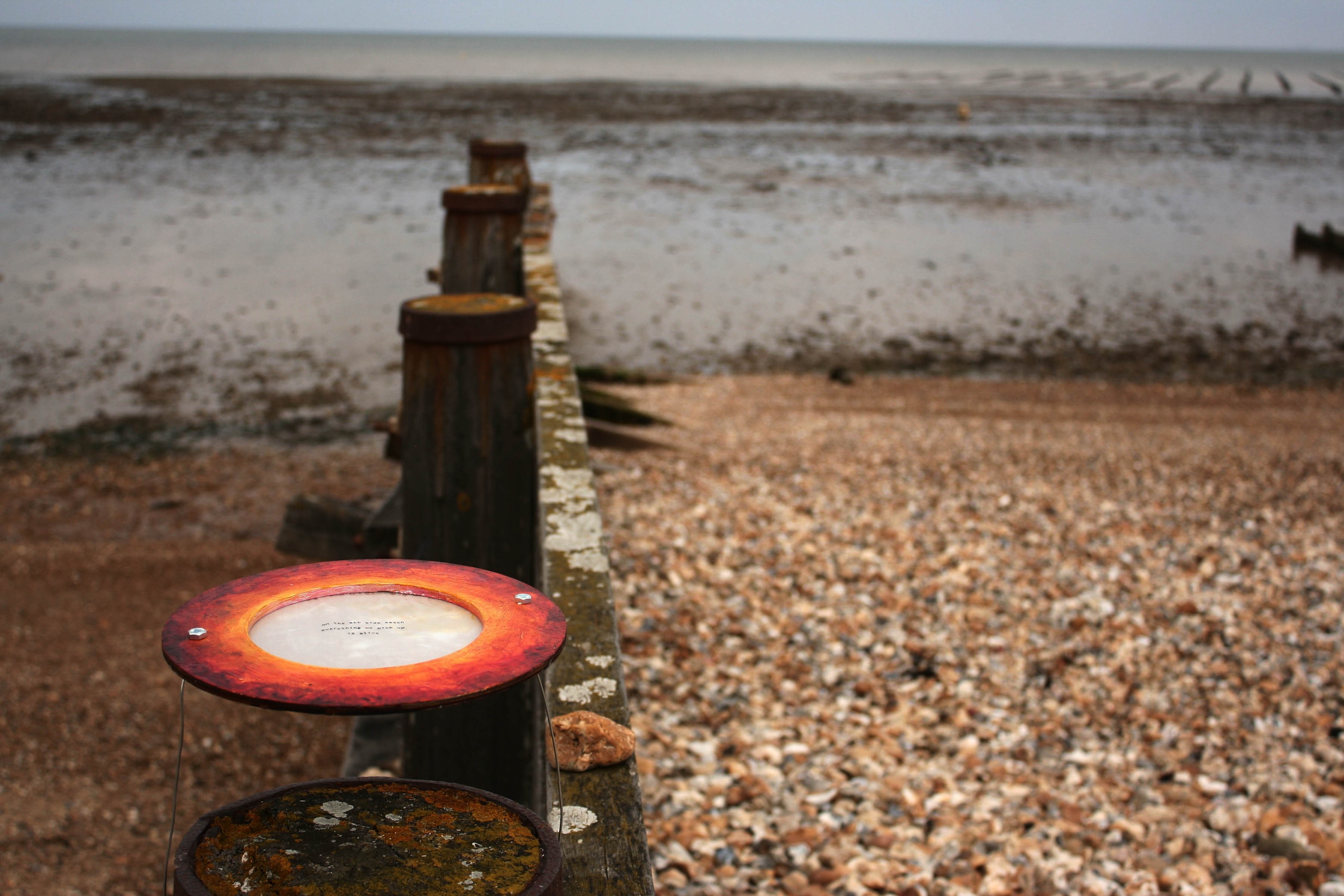
July
Spirit Levels: An Exhibition Under Construction. Mixed media group exhibit.
Exhibit put on with two other studio mates and two student curators in a former brewery. We installed scaffolding around the place and used it as skeletal structures, like a playground for our very different work to interact with each other. I used this show as a chance to both show my botanical-style root and rope drawings but to also experiment with found objects – rotting dirty rope, planters, and roots found in community garden compost heaps! It’s very satisfying to bring dirt into a white-walled gallery. The charcoal mural I did in one corner was a bit of an experiment leading to the charcoal wall rubbings I did for my thesis installation.
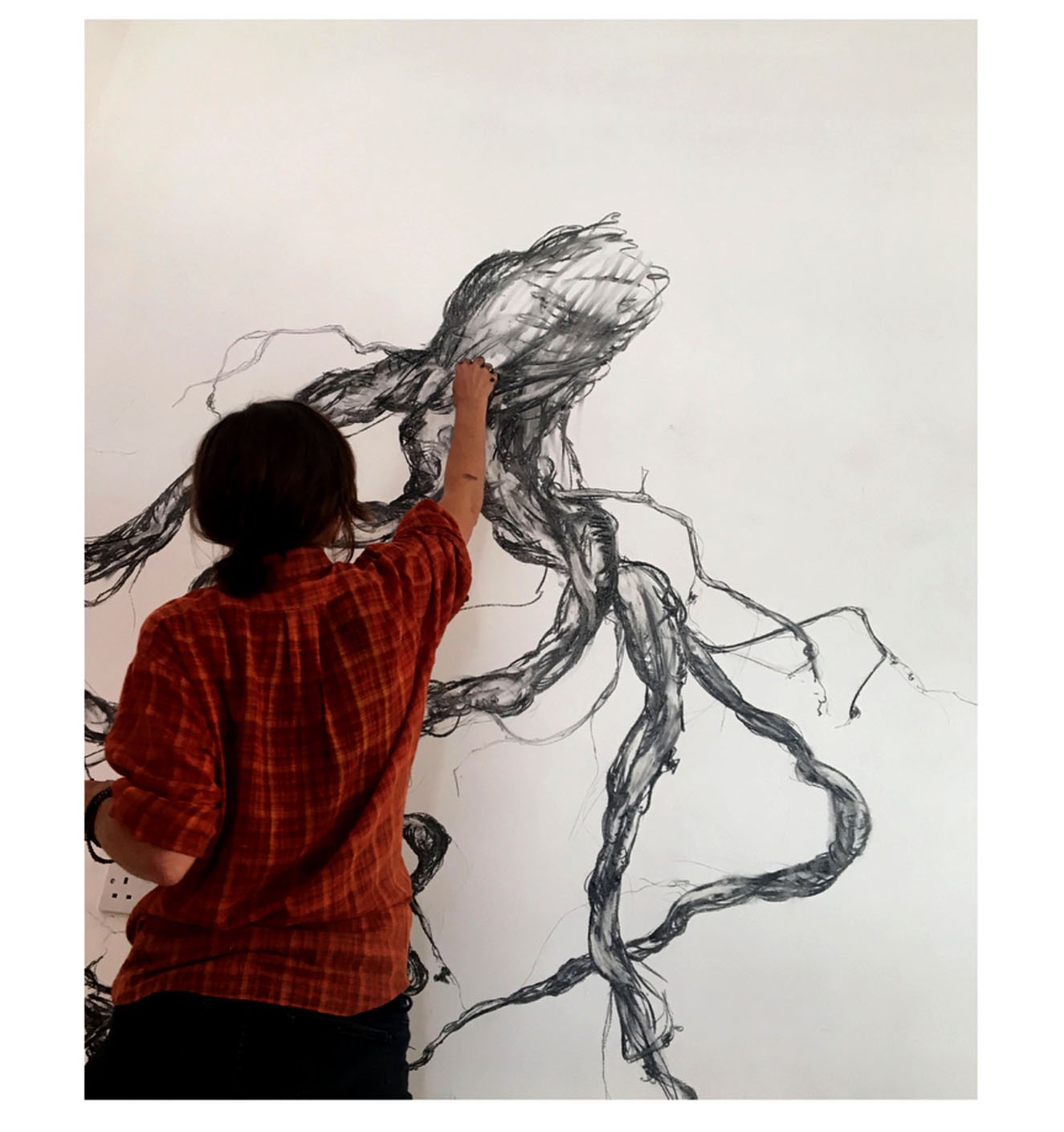
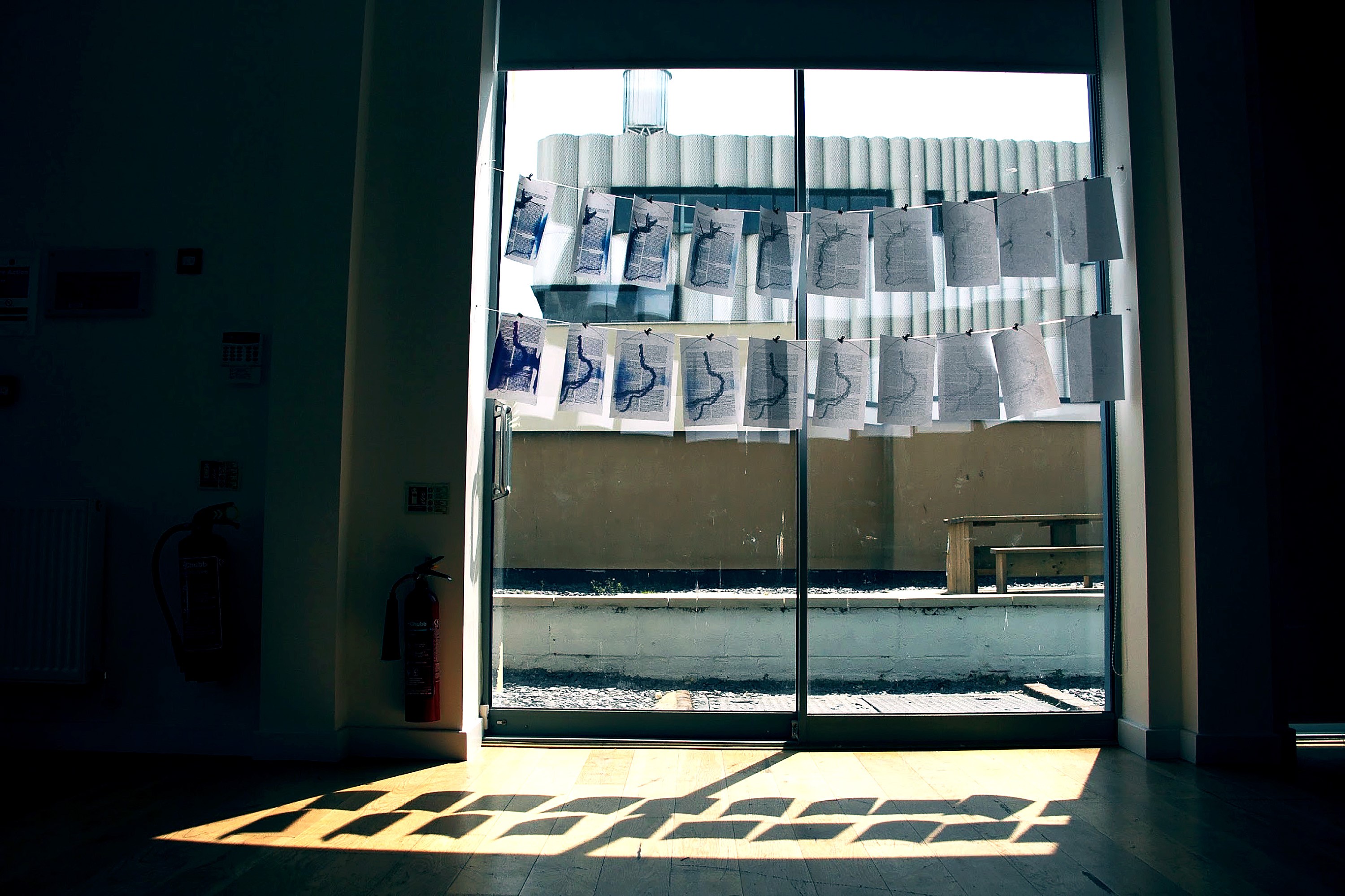
August
UCA MA Thesis Show: Mixed Media. 9 different MA programs showing in the entire campus.
I negotiated for my space to be in the warehouse-like gallery because it was the only space with a view of trees and a high enough ceiling. My work was a mixed-media installation of film, fabric, and natural materials sourced from the woods where I was working and filming over three months. It focused on a single sweet chestnut tree in the Blean Woods, one of the hundreds that are coppiced on decade-long cycles.
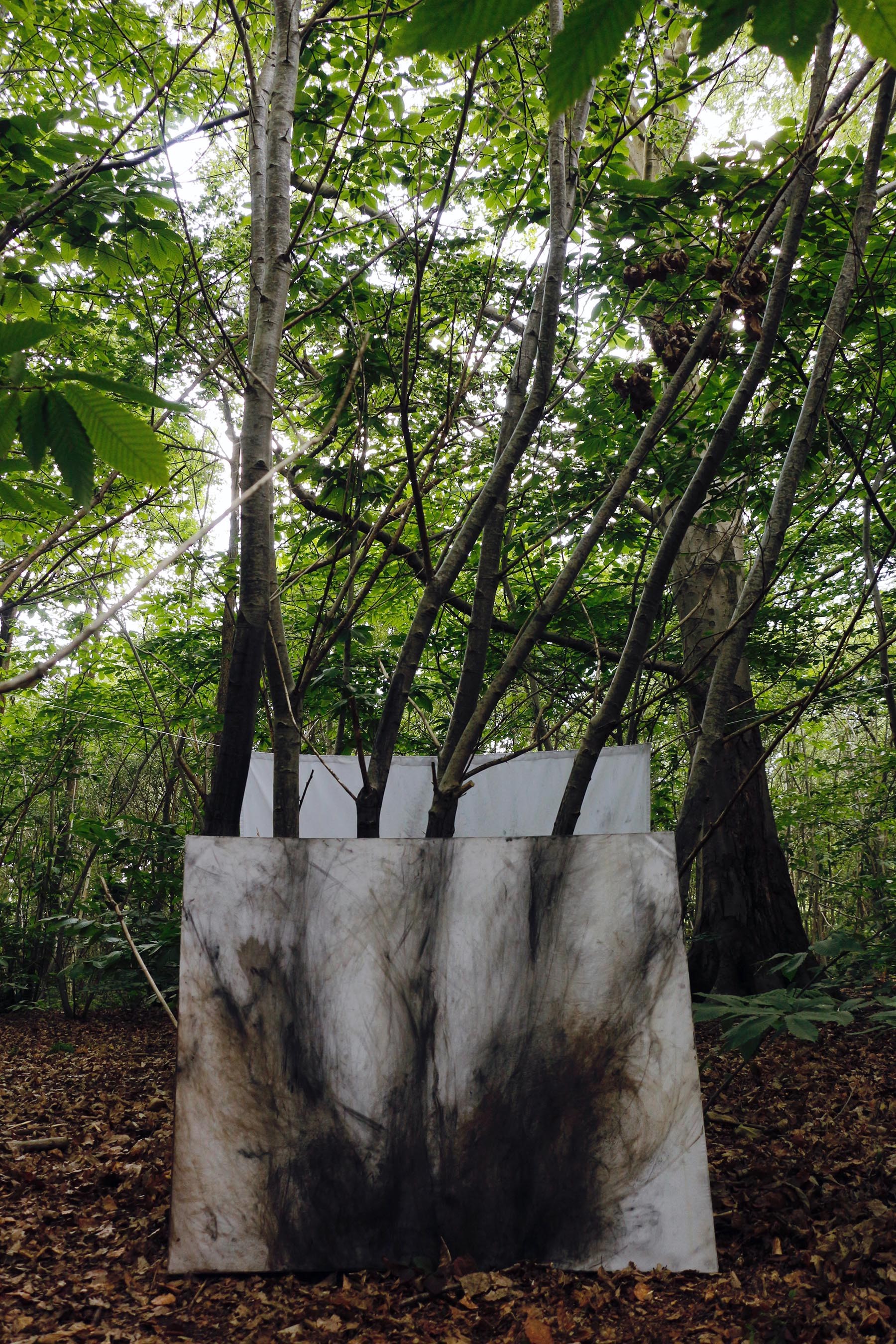
It was an imagining of its energy – escaped or stunted, and explored a personal nature-human dynamic. Also influencing its tone was the timing of the three months coincided with a traumatic incident of severing in my personal life…. which is explored in the two films. I created an environment in a three-walled section of the gallery. The walls opposite each other each had a 12-minute film loop projected on charcoal and plaster textured walls. Each was paired with a bedsheet half upon which I did various charcoal and dirt rubbings. The central wall was an expressionistic layered charcoal mural. I transcribed an hour-long interview with a man of spiritual significance about tree energy and wood burned his words onto a wooden panel at the farthest edge of the installation. Charcoal dust and stumps, woodchips, dirt, leaves, moss, etc., were included along the edges of the walls in particular ways.
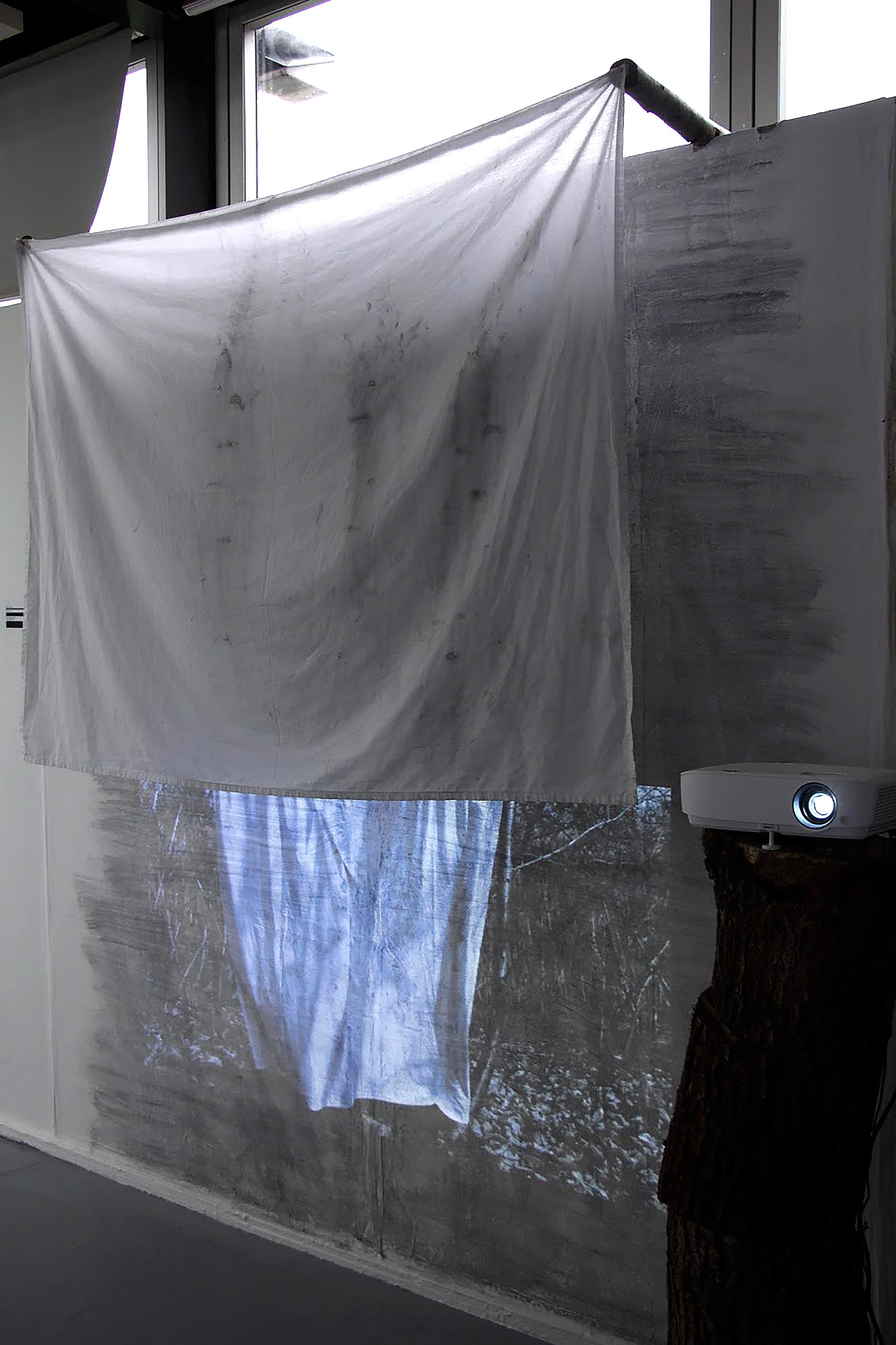
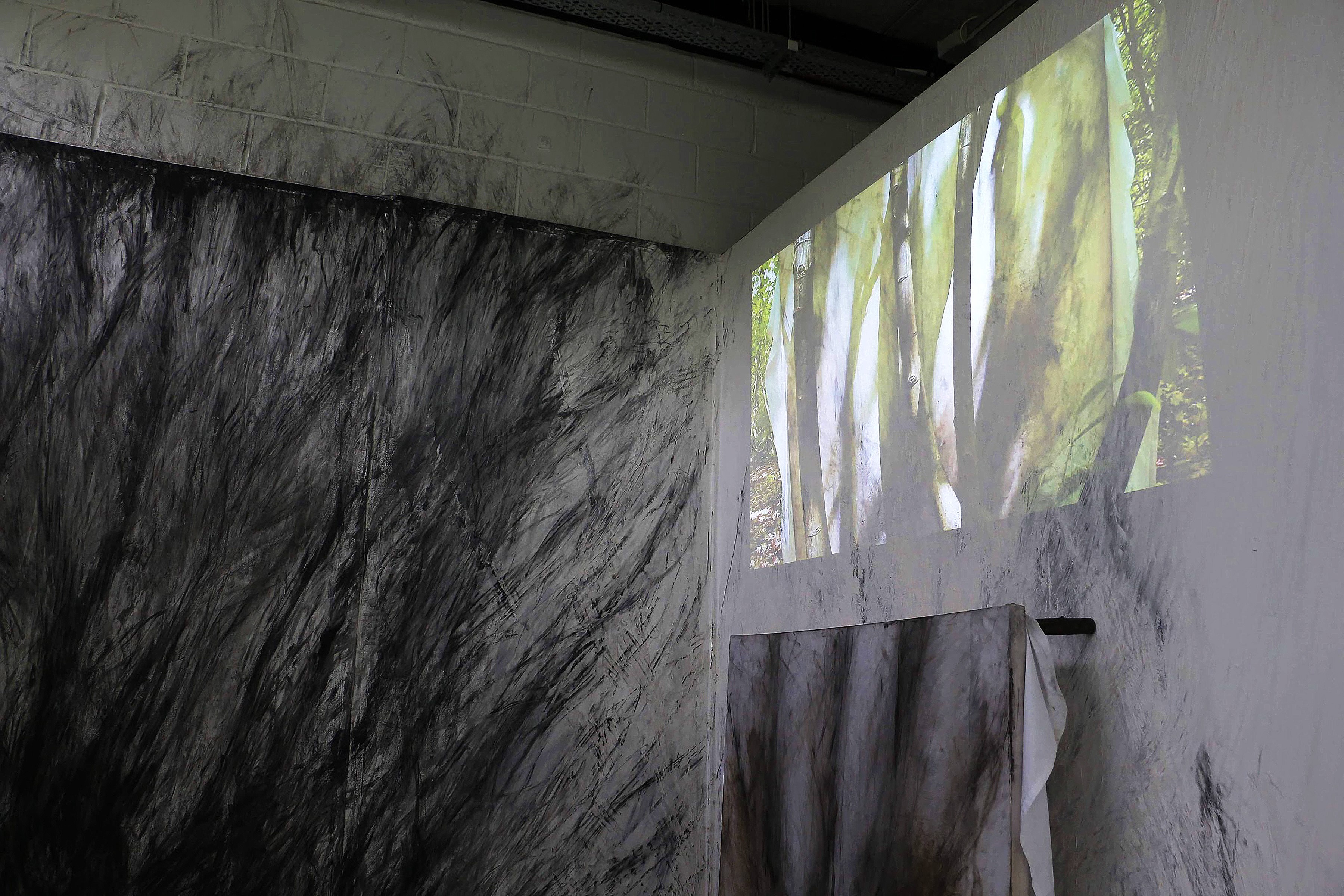
September
Trekked through Scotland!
October – present
Texas
I am in Texas now, with a six-month window to work on my personal art projects, be involved in the local mural and arts scene, and apply for future opportunities – hopefully ones that can bring me back to the UK. I’m more than ever obsessed with trees, and the storage and flow of energy. Here in Texas, I’m focusing primarily on the honey mesquite, which grow like frozen drunk revelers! They can have taproots that grow 150 feet deep…!
